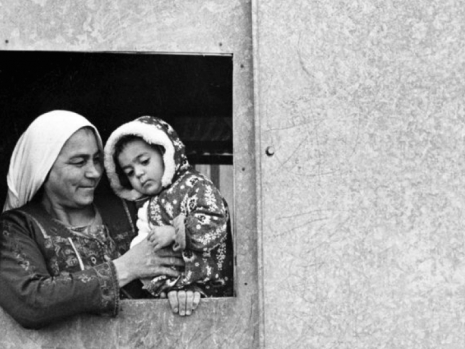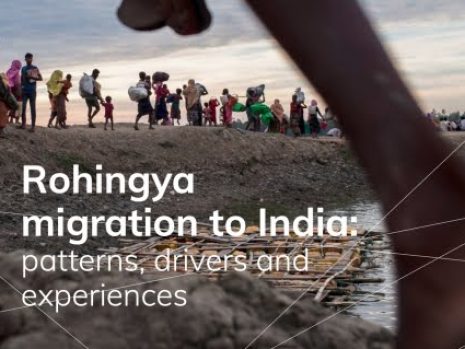Introduction:
While the core motivation for migration is typically ‘the pursuit of a better life,’ migrant populations often experience weighty, systemic challenges to their physical, mental, and social well-being. They often face unversed social, political and cultural norms, language barriers, poor living standards, exploitative working conditions, as well as restricted access to health care services. Subsequently, migrants are specifically the type of group that international human rights frameworks are designed to protect. International human rights recognize the enjoyment of the highest achievable standard of health as a fundamental human right of every individual, irrespective of race, gender, religion, political affiliations, economic or social condition, and legal status. And the right to the highest possible standard of health carries both national and international obligations. It places duties upon States in relation to individuals within their borders.
The right to health and health-related rights are recognized across multiple international instruments including but not limited to: the ICCPR (1966), ICESCR (1976), ECHR (1953), UNCRC (1989), Pact of San Jose (1978), African Charter on Human and Peoples’ Rights (1986), Health Protection and Medical Care Convention (1987), etc. Although there is no single comprehensive international instrument which protects the rights of all people who cross borders; the rights of these communities are recognized within numerous instruments and branches of international law which highlight important implications for the rights of those who migrate and their health specifically. As concerns mount about the spread of Coronavirus across borders, and its development into the biggest health crisis of the 21st century, now is the time to consolidate and explore the general and specific instruments which recognize and define the right to health, with a focus on migrants more than ever. These instruments are spread across various intersectional disciplines such as human rights law, labor law, refugee law and international humanitarian law. Human rights law is at the core of this protection.
The Coronavirus Paradigm:
As concerns mount about the 940,647 reported infections from Coronavirus and its spread to more than 180 countries to date, the UN Migration Agency (IOM) stood ready to supply the necessary technical support to governments, in partnership with the World Health Organization (WHO). Their efforts aimed at enabling people to travel in a healthy manner and help enact public health measures with minimum impact on both societies and the international economy.
On January 30, 2020, global health officials gathered at the WHO headquarters in Geneva and rightfully determined that the situation a Public Health Emergency of International Concern (PHEIC), and highlighted the need for “a coordinated international response.” The Committee did not recommend any travel or trade restriction based on the information available at the time, but this was long before matters escalated further. Based on their original public statement, IOM insisted that based on international health regulations (IHR), although international travel restrictions may intuitively seem like an effective first response, this is not something that is usually recommended given the social disruption that such restrictions tend to cause. IOM and WHO both recommended focusing more on preparation and response measures in parallel. In addition to offering their support and guidance, IOM reiterated the need for comprehensive and inclusive approaches, and called on States to ensure that migrants and other non-nationals are taken into account in public health planning and messages. In line with international health principles, the WHO’s Emergency Committee also cautioned against actions that promote stigma or discrimination.
The International Response:
Although this stance seemed to be initially sturdy, developments in the spread of the epidemic had UN agencies singing a different tune. On March 17, 2020, the UN refugee agency (UNHCR) and IOM both announced the temporary suspension of sending refugees on to resettle in new permanent homes abroad due to travel disruptions caused by the Coronavirus. UNHCR insisted the suspension would go into effect within days, but also appealed to countries to “ensure that movements can continue for the most critical emergency cases wherever possible.”
Problematically, this suspension means an increasing number of individuals will be left in displaced persons’ camps and other temporary settlements which often pose significant safety and health risks of their own. Expressing its concerns on the matter, UNICEF stated that European border restrictions enforced since Coronavirus would disrupt plans to move hundreds of children out of “dire and dangerous” refugee camps in Greece. Although Finland, France, Portugal, Luxembourg, and Germany, agreed to take unaccompanied minors from Greece after thousands of refugees and migrants arrived in the EU Member State, other EU Member States have maintained rigorous checks at borders that are normally in a zone of control-free travel.
And the statistics on this group of individuals is dire to begin with. With more than 70 million people globally forced by persecution, conflict, violence and human rights violations to flee their homes, 29 million of which are refugees, migration and health go hand in hand whilst tackling an international concern of this magnitude. And with 84% being hosted by low or middle-income nations which have weaker health, water and sanitation, migration and health are the latest intersectional discipline in the lime light.
Migration, Development and Conflict:
The biggest obstacle to an effective Coronavirus response presently, is when public health systems are weak or broken as a result of conflict and chaos – prompting them to be far behind in the implementation of their local legal frameworks let alone international legal frameworks, norms and principles. According to UNHCR, as of March 2020, 34 of the 180 countries reporting local transmission of COVID-19 have refugee populations exceeding 20,000 people, which are currently unaffected by the virus. In these contexts, prevention, preparation and communication are key. This is because refugees and internally displaced people often find themselves in legal limbo, suggestively covered by international legal frameworks whilst living in overcrowded spaces where public health and other services are already overstretched or poorly resourced by their hosting State.
Multiple States affected by instability and conflict have borders which are not properly monitored, with refugees, economic migrants and others often travelling along informal routes. These countries can have a hard time monitoring who is entering and leaving their territory – and in this case, the international legal framework has not developed to this stage of comprehension. Subsequently, although an outbreak of cases among the refugee community has not been identified to this date, this population is especially vulnerable to Coronavirus and other diseases. This is mainly due to their high geographical mobility, instability, living in overcrowded conditions, lack of sanitation, and lack of access to decent healthcare or vaccination programmes.
The truth of the matter is that to this day, refugee populations are quite often left out of both disaster and epidemic preparation and planning, and reaching marginalized refugees and migrants with information about the international legal frameworks which protect them can poses an entirely different challenge in itself. Operations must work with national authorities, health ministries, WHO and partners to ensure full inclusion of refugees and others of concern in national preparedness and response plans.
Concluding Remarks:
Travel restrictions in connection with this outbreak applied to asylum seekers, refugees and others of concern will pose an unduly threat upon people’s right to access safe territories and seek asylum. Subsequently, and in-line with the Non-refoulement Obligations under the 1951 Convention relating to the Status of Refugees and its 1967 Protocol, there can be no forced returns based on real or perceived fears of Coronavirus transmission so long as the life of the individuals in question is at risk. Any restrictions on freedom of movement, or other measures instituted by governments, need to be applied to displaced people in a non-discriminatory fashion for this very purpose.
International legal frameworks and the budding discipline of international migration and refugee law is in place namely because refugees and migrants are often the first to be stigmatized and unjustifiably accused with spreading viruses and namely any other ‘national security’ threat. Nationalist politicians from the United States and all the way to Europe have railed against migration and attempted to draw a clear link between migrants and refugees and the outbreak, despite there being no evidence to support this. International legal frameworks are once more tasked with the burden of dealing with yet another intersection, this time: health and migration. Without the conformity of member states to these international mechanisms, the globe risks a second wave of an international migration crisis following the containment of these international health concerns.



